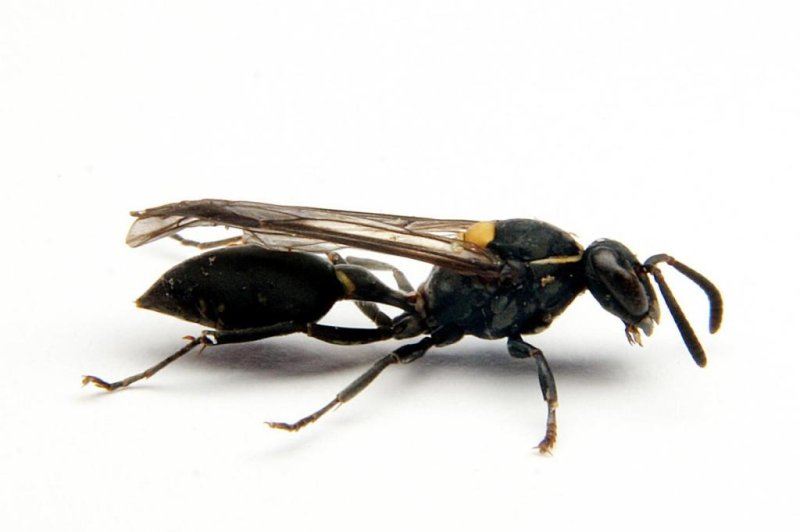The Brazilain social wasp Polybia paulista's venom was already known to kill cancer cells. Scientists only now have discovered how. Photo by Mario Palma/Sao Paulo State University
WASHINGTON, Sept. 1 (UPI) -- Although scientists were aware the venom from the Brazilian wasp Polybia paulista is capable of killing cancer cells without harming nearby healthy cells, researchers have only now discovered how it does so.
By discovering the method by which it causes cancer cells to die, researchers are hopeful the toxin MP1, the active peptide in the wasp's venom, will lead to new ways of fighting the disease. They already were aware it can inhibit the growth of prostate, bladder and leukemic cancer cells but only now have an idea of how that works.
"Cancer therapies that attack the lipid composition of the cell membrane would be an entirely new class of anticancer drugs," said Paul Beales, a professor at the University of Leeds, in a press release. "This could be useful in developing new combination therapies, where multiple drugs are used simultaneously to treat a cancer by attacking different parts of the cancer cells at the same time."
Beales and João Ruggiero Neto of São Paulo State University thought the wasp venom's effectiveness at killing only cancer cells was connected to differences between cancerous and healthy cell surfaces. This led them to test a theory that two types of phospholipids on the surface of cancer cells, which are normally located in the inner membrane of healthy cells, could be the key to MP1's effectiveness against tumors.
Using several means of imaging and certain biophysical techniques, researchers saw in model membranes that one phospholipid called phosphatidylserine increased MP1's ability to bind to cancer cells by 7 or 8 times. The other phospholipid, phosphatidylethanolamine, then enhanced the peptide's ability to disrupt the cell membrane -- creating holes in the cell membrane that allow elements crucial to the function of cells to leak out, killing them.
"Formed in only seconds, these large pores are big enough to allow critical molecules such as RNA and proteins to easily escape cells," Neto said. "The dramatic enhancement of the permeabilization induced by the peptide in the presence of PE and the dimensions of the pores in these membranes was surprising."
The researchers said that more work will have to be done to better understand how this process works, and will then need to be proven safe to non-cancerous cells when used in medicinal ways.
The study is published in Biophysical Journal.















